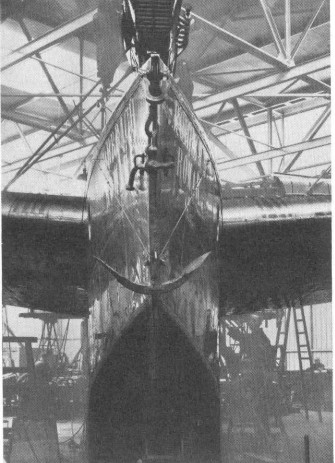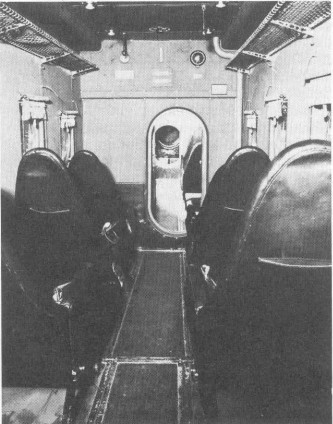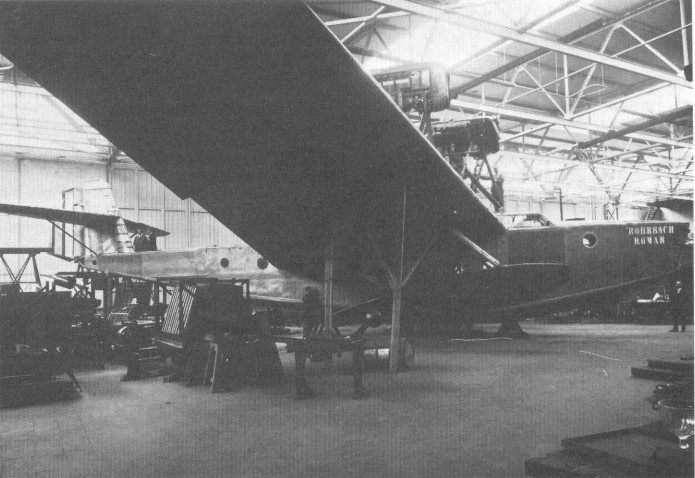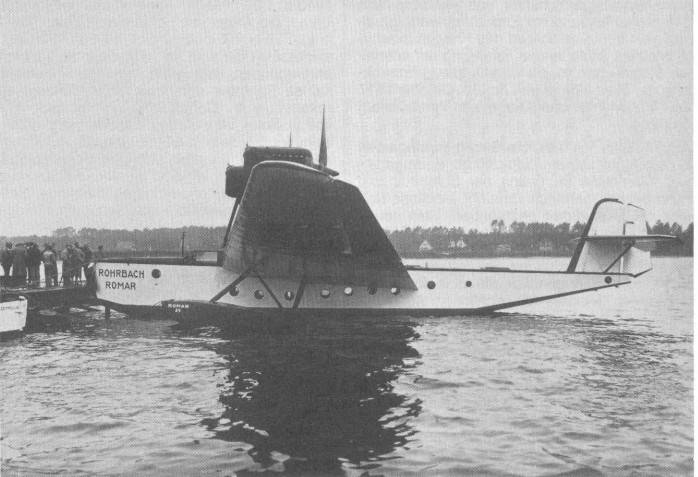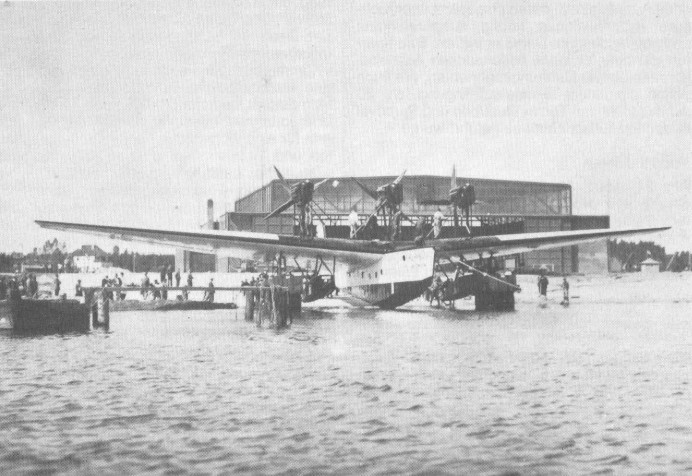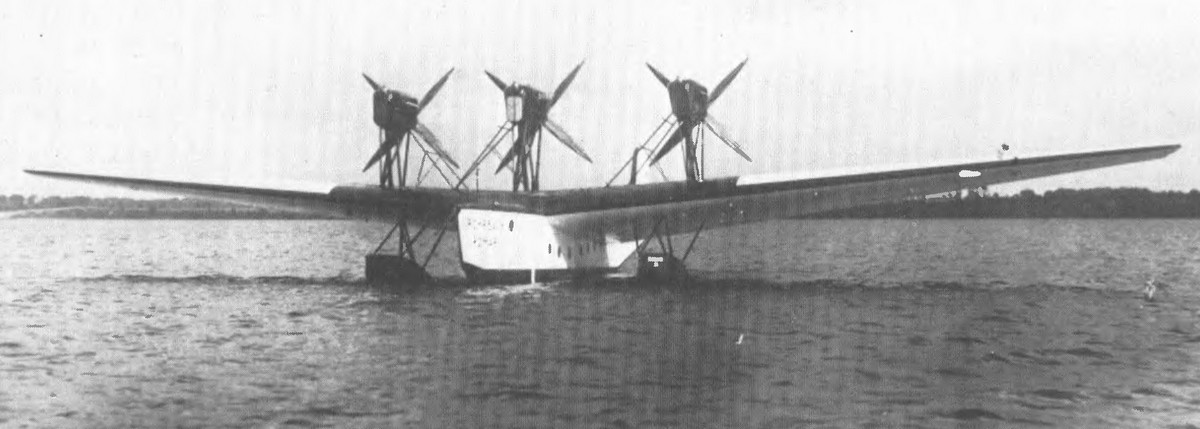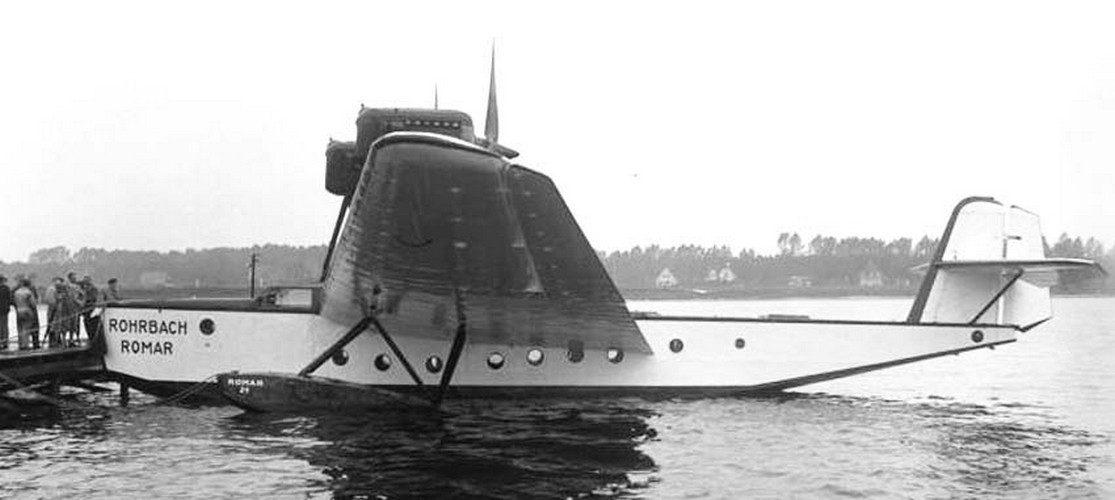The Romar was the final production aircraft from Rohrbach and was a monoplane flying-boat with a crew of four or five and two cabins for a total of 12 passengers. The revised Romar II could accommodate 16 passengers. It had three BMW VIUZ Vee piston engines strut mounted above the wing. The first aircraft flew on 7 August 1928 and was unveiled at the Berlin Aviation Exhibition in October 1928. Only four aircraft were built, three were used on Baltic services by Deutsche Luft Hansa and one was supplied to the French Navy.
AERONAUTICS: Flights & Flyers
Monday, Sep. 23, 1929
Rohrbach-Romar Wreck. Furious was Dr. Adolf K. Rohrbach, head of the Rohrbach Metall-Flugzeugbau, who was in Manhattan last week. One of the three huge trimotored Rohrbach-Romar seaplanes his company has built for Luft Hansa's trans-Atlantic service crashed at Travemuende, Germany, floated for 90 minutes, then sank. Thirteen passengers and crew were saved. The crash was due to test flying at low speed. The sinking was because hull portholes and bulkhead doors had not been closed as Dr. Rohrbach had ordered.
The Rohrbach " Romar "
With its large dimensions and lines expressive of great strength, not to say brutality, the Rohrbach " Romar " is, perhaps, the most imposing machine in the whole of the Berlin show. We understand that three of these machines have been built, of which one is exhibited, while a second is at present undergoing flying tests at Trawemiinde, where it is said to have beaten all existing records for flying-boats by getting a weight of 18-5 tons into the air.
Generally speaking, the Romar resembles previous Rohrbach flying-boats, of which the Beardmore " Inverness" will be one example known to FLIGHT readers. Modifications in design are, however, noticeable, such as, for instance, the very high placing of the engines, higher even than in previous types, and the pronounced taper of the monoplane wing, which is of tremendous chord and thickness at the root, but tapers to quite small chord and thickness at the tips
The Rohrbach flying-boats have never been of very great beam, but in the Romar it would seem that Dr. Rohrbach has reached an irreducible minimum, and the hull of the machine resembles, as regards its length-to-beam ratio, the " plank on edge " type of yacht familiar to English yachtsmen forty or fifty years ago. The reduction of beam in the Romar has been accomplished by a change in the planing bottom from the flat bottom originally used by Rohrbach to one having a pronounced Vee. Moreover, the Yee is given a pronounced hollow, doubtless in order to reduce the shock on alighting, a feature probably connected also with the very narrow beam. It should be remembered that Dr. Rohrbach has, for many years, been the apostle of high wing loading, which is merely another way of saying that he has advocated high landing speeds. Whether one agrees with Dr. Rohrbach in this view or not-and there are those in this country who maintain that without a very high wing loading the Rohrbach machines would not be possible at all-the fact that the machine does have a high landing speed must, of necessity, call for a very careful design of hull in order to prevent the bottom from collapsing under the shock of alighting in the sea. An examination of the machine exhibited gives one the impression that Dr. Rohrbach argued that it would in any case be impossible to give the hull a beam sufficient for lateral stability on the water without the assistance of wing floats, and this being the case, it would be preferable for purposes of alighting to keep the beam down to the minimum necessary to enable the machine to " un-stick," and to rely upon the increased volume of the wing floats to make up for the lateral stability lost by reducing the beam of the main hull.
Another feature of the machine which forcibly impresses one is the relatively short tail leverage. The monoplane wing is of very great chord at the root, and the distance from main trailing edge to tail plane leading edge appears to be less than one chord length. The wing section employed does not appear to be one which would be likely to give a particularly small centre of pressure travel, and with the high position of the centre of thrust, which one would expect to cause a very considerable difference in trim betweea the "engine-on " and " engine-off " condition, the tail leverage looks to English eyes a good deal on the short side.
Constructionally, the Romar follows previous Rohrbach practice in that the wing is constructed of a main box spar very strongly built up from flat sheet and channel section, to the front and back of which are bolted the leading and trailing edges of the wing. The hull is flat-sided and flat-topped, the only portion which appears to require panel beating being the curved hollow planing bottom. As in previous Rohrbach machines, Duralumin is the material used throughout, except for certain highly-stressed fittings and bolts, and certain struts such as those to the wing floats and those supporting the engines. The hull is divided by bulkheads into watertight compartments, and some of them are provided with very ingenious bulkhead doors, which are opened almost as quickly as an ordinary door, but which yet make a watertight joint when closed. The details of one such door are shown in some of our sketches. The extreme nose of the hull is used for stowage and is separated from the wireless compartment by a bulkhead door. In the aft wall of the wireless compartment is another bulkhead door communicating with the pilot's cockpit, which is totally enclosed. A feature of the Romar is that a special cockpit has been set aside for the engineer, in which are all the instruments, etc., relating to the power plant.
The passengers' cabin has seating accommodation for 12 passengers, and is divided by a bulkhead into two sections, of which the front cabin has four seats and the rear cabin eight. The leading dimensions and weights of the Rohrbach Romar are as follows:-length, o.a., 22 m. (72-2 ft.) ; wing span, 36-9 m. (121 ft.) ; wing area. 170 sq. m. (1,830 sq. ft.) ; draught with normal load, 1-3 m. (4-26 ft.). The petrol tanks have a capacity of approximately 7,900 litres (1,740 gallons) ; and the oil tank capacity is 400 litres (88 gallons).
| Type |
4 + 12 seat flying boat (Romar I) |
4 seat freight carrying flying boat (Romar II) |
| Engine |
3 BMW VIU with Ø 4.5 m propellers |
3 BMW VIaU with Farman gearbox |
| Dimensions |
Length 22.55 m, height 8.47 m, span 36.90 m, wingarea 170.00 m2, draft 1,3 m at normal flying weight |
| Weights |
Empty 11080 kg, load 8420 kg, paying load 925 kg, flying weight 19500 kg |
Empty 11620 kg, fuel 6160 kg, oil 360, crew 320 kg,, paying load 1240 kg, flying weight 19700 kg |
| Performance |
Max. speed 206 km/h, cruising speed 173 km/h, landing speed 106 km/h, range 4000 km, service ceiling 2600 m |
Max. speed 228 km/h at sea level, cruising speed 209 km/h at sea level, climb 4.06 m7sec., service ceiling 2800 m, range 4066 km |
| Type |
Werk.Nr |
Registration |
History |
| Romar I |
29 |
D-1693 |
"Hamburg". First flight 7th of Aug.1928 at Travemünde (Pilot Hermann Steindorff) After 40 flights, of these 4 with a flying weight over 18000 kg, the testing was finished on 30th of May..Delivered to the Lufthansa 22nd of July 1929. Damaged during a start on the 18th of November 1929, crew unhurt but the aircraft was not repaired.Stored in Berlin until scrapped 1933 |
| Romar I |
30
|
D-1734 |
"Bremen".First flight tth of April 1929.After 21 flights delivered to the Lufthansa Used by the Lufthansa in the Baltic in 1929. Crashed 10th of September 1929and sunk in the Baltic, the crew and passengers survived. Salvaged but not repaired, scrapped 1933 |
| Romar I |
31 |
D-1747 |
"Lübeck". First flight 1st of Aug. 1929.Delivered to the Lufthansa on 13/10 1029. Used by the Lufthansa during 1929. Rebuilt in 1930, engines changed. After testing stored in that year and scrapped 1933 |
| Romar II |
62 |
F-AKEM |
First flight 4/3 1931. Delivered to France 1/4 1931 |


